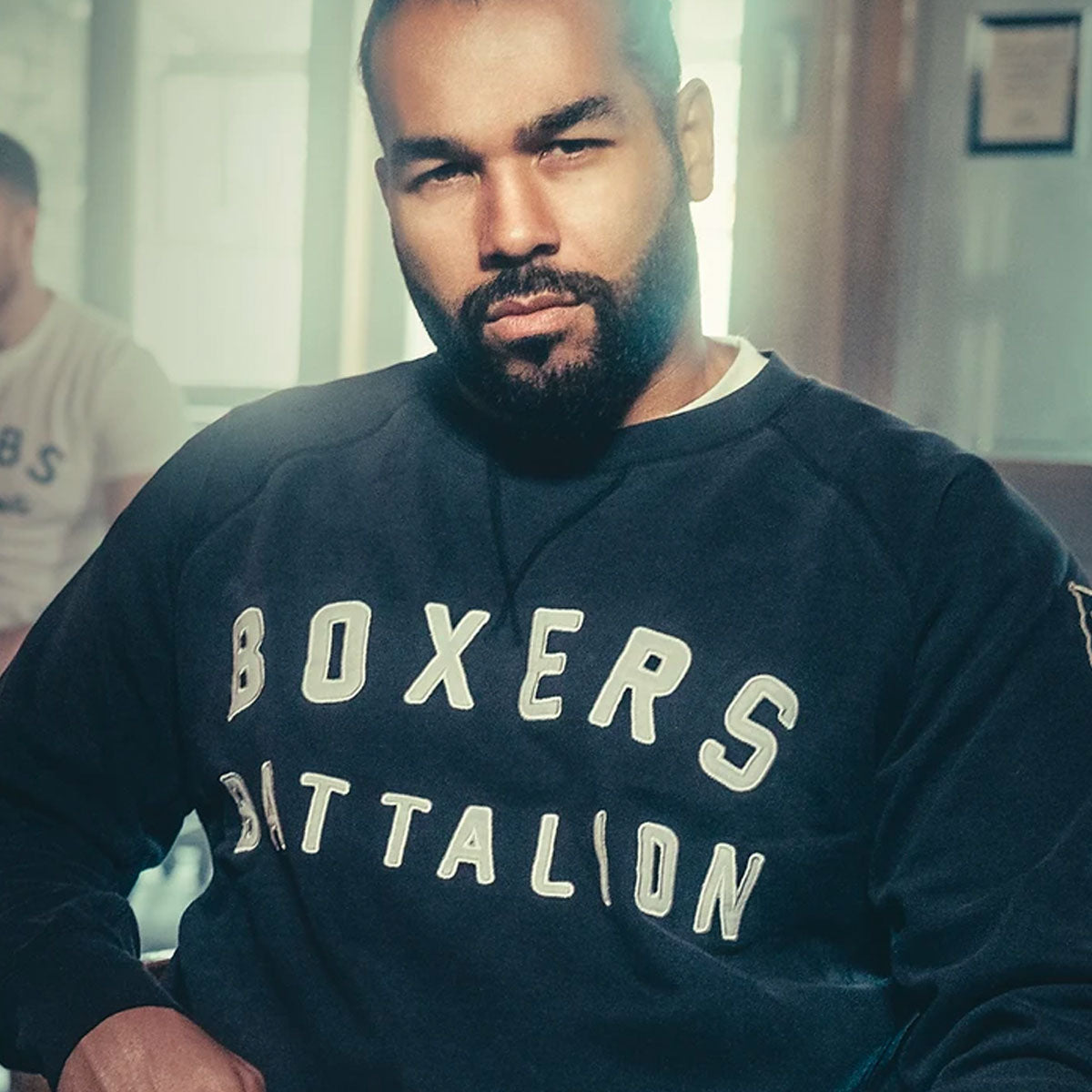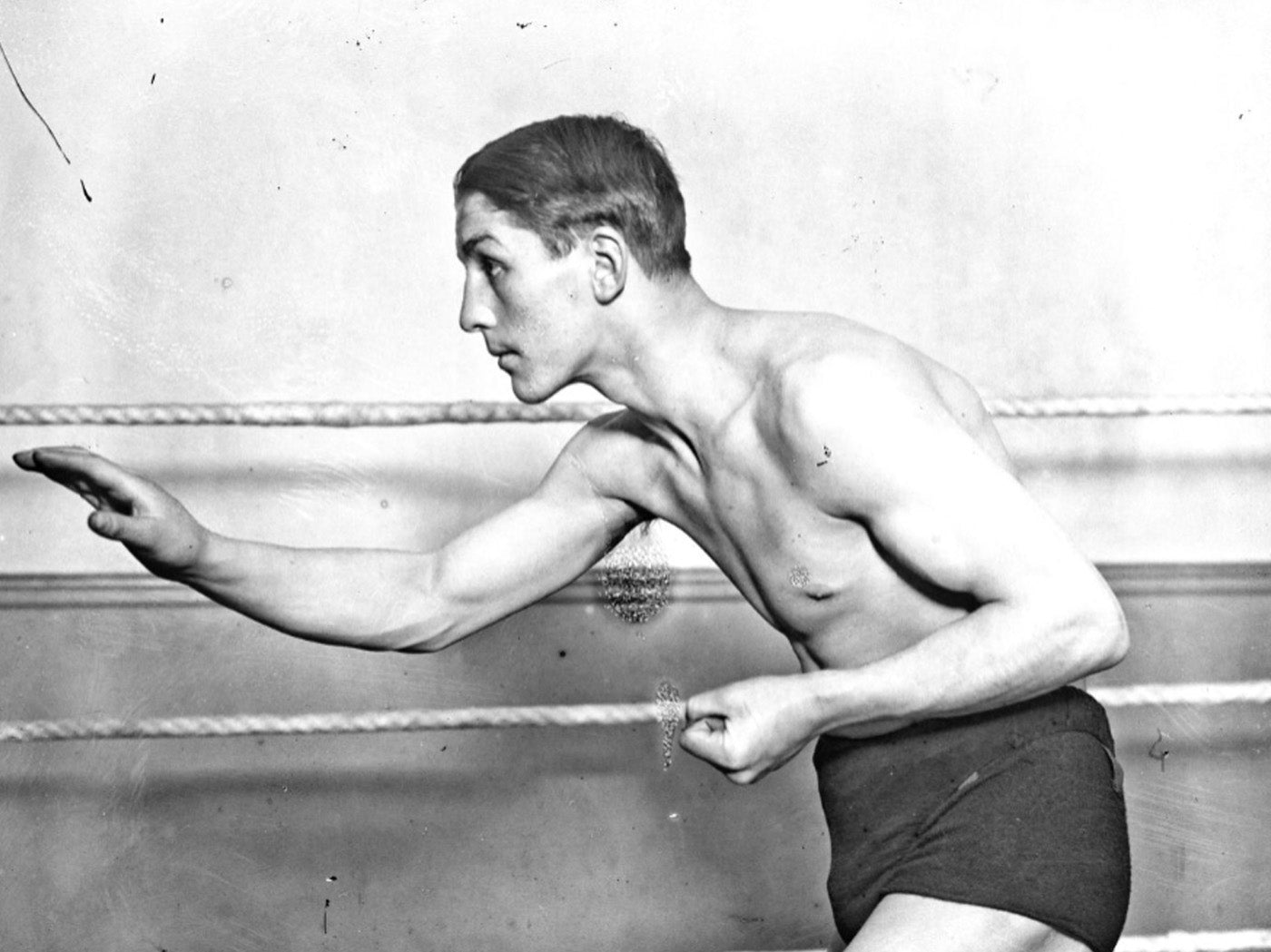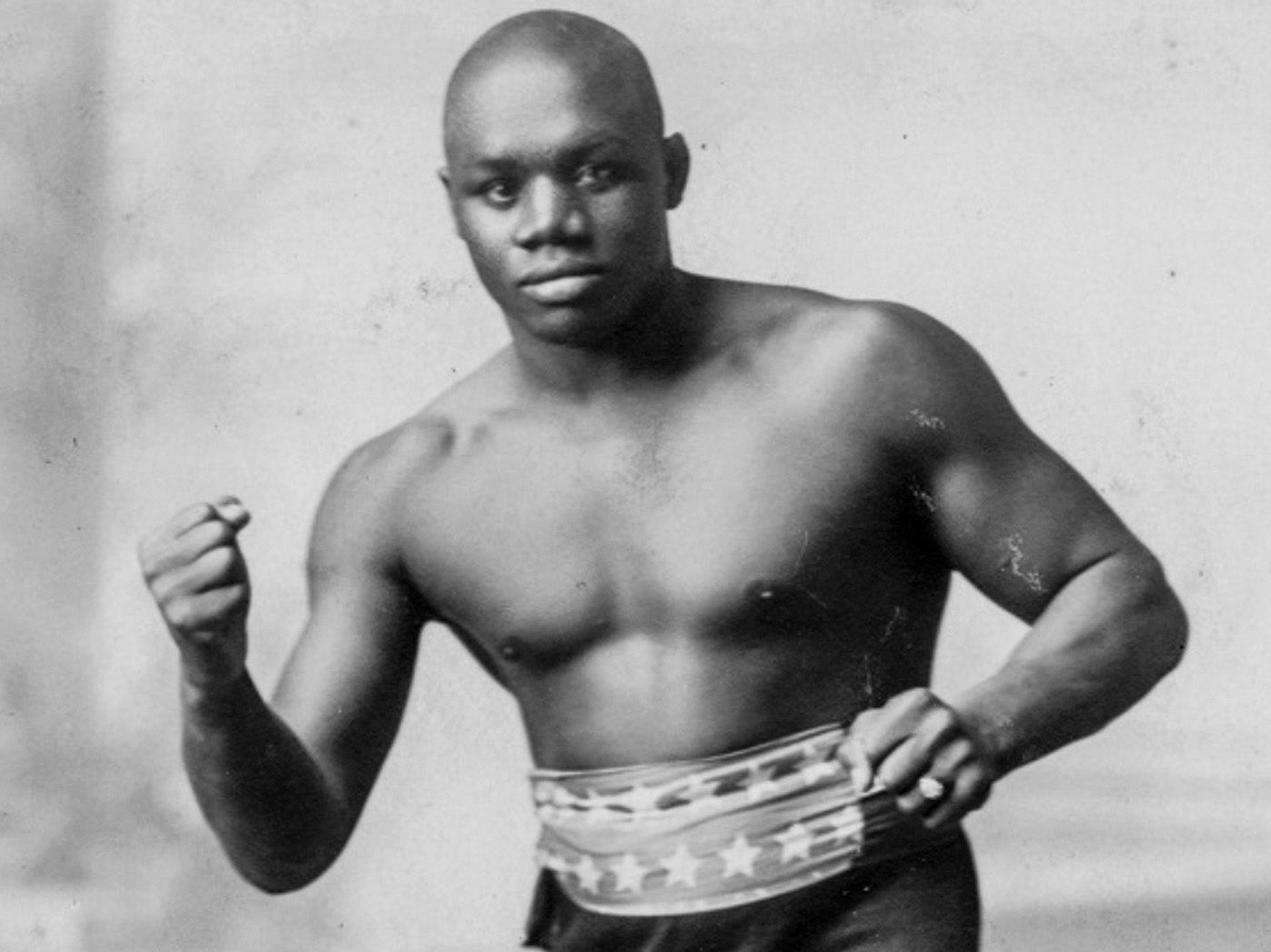‘Attack is only one half of the art of boxing.’
George Carpentier

As a fully fledged 175lbs light heavyweight standing at 5ft 11 inches, Carpentier was a light heavyweight force of nature. However, it took a while for the Liévin born Frenchman to grow into that frame.
Born on 12 January 1894 to a coal mining father, Carpentier made his debut on 20 May 1909 at the Café de Paris, Maisons-Lafitte, against Ed Salmon, winning by disqualification in the thirteenth of a scheduled 20 round contest. Unfortunately, four weeks later Salmon knocked out 14-year-old Carpentier in the eighteenth round.
Within the next 11 months, Carpentier clocked up 12 wins, two losses and a draw, before challenging Paul Til for the French bantamweight title at the Hippodrome Lillois in Lille, in front of 3,000 onlookers. Unfortunately for the 15-year-old, on 16 October 1909, after 10 rounds the contest was declared a draw. Despite winning his next three fights in five weeks, when he fought Til again on 27 November 1909, he was stopped in the eighth round. The pair would meet a further three times, with Carpentier winning once and the other two being declared a draw and no-contest.
Within a year of turning pro, Carpentier put on 14lbs and by the age of 16 he was a further 30lbs more, boasting 147lbs status. On 10 June 1911, already boasting a record of 43 wins, seven losses and five draws, George won the French welterweight title, stopping Robert Eustache at the Cirque de Paris. Four months later, after four knockdowns, Carpentier forced Aldgate’s Young Joseph to retire in the tenth round to claim the European welterweight crown in Joseph’s backyard of London.
After racking up six more victories in three months, on 29 February 1912 Carpentier moved up to the 160lbs league and locked horns with Bermondsey born, Jim Sullivan at the Stand de la Condamine in Monte Carlo, for the European middleweight title. Despite being a tough hombre, Sullivan was knocked out in the second round, making Carpentier a two weight European champion in the space of a mere four months.
After defending his European middleweight strap twice, Carpentier took on world middleweight champion American Frank Klaus, on 24 June 1912 at the Grand Hall des Magasins, Généraux. Despite doing well against the 86 fight veteran, who, for the records came in three pounds over the middleweight limit, Carpentier’s manager jumped in the ring in the nineteenth round after Klaus caught Carpentier with two successive elbow strikes. Consequently, the American won by disqualification as a result of the manager’s actions.
Four months later, Carpentier took on former world middleweight champion, Billy Papke, giving the American plenty of trouble until the last couple of rounds when lacerations decided his fate. Boxing News wrote. ‘Papke defended his claim as World Middleweight champion. Carpentier suffered a deep cut over his right eye in the 17th round and blood positively rushed down the lad's face. Carpentier's manager, Descamps prevailed upon his plucky colt to forebear. Thus it was that, although the gong rang out for the 18th round, it was but the signal for Carpentier to acknowledge defeat.’
By 18 years of age, Carpentier was fighting a little over the 160lbs mark, yet sharing the ring with much heavier opponents. Four months after the Papke loss, the Parisian resident knocked out Yorkshireman, Bandsman Dick Rice in two rounds for the European light heavyweight title, then a further four months later he knocked out Bombardier Billy Wells for the European heavyweight strap, making him a four weight European champion (at a time when only eight weight divisions existed). Incredibly, George weighed 168lbs (super middleweight in modern day classifications) to win the heavyweight crown. After four rapid wins on the bounce, Wells fancied his chances in a return match and was knocked out in the opening round by the 19-year-old on 8 December 1913. Both Wells encounters ended in devastating fashion, which announced Carpentier onto the world heavyweight scene. It was only a matter of time before a world title shot would come his way.
1914 was a mixed bag for the handsome man who soon earned the moniker, ‘The Orchid Man,’ due to the corsages he wore with his bespoke suits. After knocking out Canning Town’s Pat O’Keefe in two rounds, the Frenchman lost a 15-round decision against esteemed American, Joe Jennette. Four knockout victories later, Carpentier knocked out Gunboat Smith on 17 June 1914, for the nondescript White Heavyweight Championship Of The World. Ten days later France’s favourite fighting son beat Kid Jackson, then one month later the First World War started, putting a halt on his route to world stardom for the next five years.
In his boxing prime, Carpentier joined the French Air Force and was awarded the Croix de Guerre and the Médaille Militaire for his endeavours as a fighter pilot, which added to his popularity on a global scale. With the War behind him, the decorated war hero returned to the ring on 20 July 1919 to successfully defend his European heavyweight crown, knocking out Dick Smith in eight rounds. Three straight victories later, on 12 October 1920 he took on Battling Levinsky at Westside Ballpark, Jersey City for the world light heavyweight title. After seven seconds of the fourth round, Carpentier knocked out the Philadelphian and in doing so picked up the accolade of world champion.
Nine months later, on 2 July 1921, Carpentier made a very gutsy move, taking on the world heavyweight champion, Jack Dempsey in what was billed as the first million-dollar gate. The Manassa Mauler weighed 188lbs, which was relatively light for a heavyweight, even in those days, whereas Carpentier was three pounds below the light heavyweight limit at a mere 172lbs. Having fought 98 times by this stage in his career, with only five losses to his name, Carpentier had earned himself a reputation for being able to knock out much bigger opponents with either hand at any given moment. Also, Carpentier had earned his stripes in the military, whereas Dempsey was the black sheep of the army.

GC vs Dempsey
Despite annihilating heavier opponents, this was a prime Dempsey and not another punchbag. He was one of the most devastating, vicious finishers in the business, with an incredible engine. Despite buzzing Dempsey with a single right hand, he couldn’t capitalise and was mercilessly beaten to a fourth-round stoppage.
Five months later, on 12 January 1922, Carpentier headed to English shores to take on Australian George Cook at the Albert Hall, disposing of the Sydney resident in four rounds. The Exeter and Plymouth Gazette wrote, ‘Carpentier celebrated his 28th birthday by knocking out George Cook, the Australian heavyweight, in four rounds. A straight left to the chin and a right to the jaw floored Cook for the count. He was up on one knee when referee Jack Smith, finished the count.’ Four months later Carpentier defended his European and world light heavyweight titles against the legendary Ted Kid Lewis at London’s Olympia in Kensington, knocking out The Aldgate Sphinx with a one punch knockout to the jaw.

GC vs Ted 'Kid' Lewis 1922
On 24 September 1922, Carpentier took on a formidable opponent in Senegalese born Frenchman, Battling Siki at the Stade Buffalo, Montrouge. Similar to George, Siki also received the Médaille Militaire and Croix de Guerre in the First World War, having been involved in a number of battles including Gallipoli. The fight unfortunately was marred with rumours of match fixing, with Siki supposedly been instructed to take a dive in the early part of the contest. If that was the case, it was a very well choreographed unwritten script which consequently unfolded. Both fighters hit the canvas in the third stanza, then Carpentier was floored in the fifth and sixth rounds. Referee Henri Bernstein disqualified Siki for tripping Carpentier in the sixth, but this decision was overruled by the French Federation of Boxing’s president and the judges at ringside. Consequently, Battling Siki was now the new light heavyweight champion of the world.

Intent on reclaiming world honours, on 6 May 1932 Carpentier jumped straight back onto the saddle, knocking out fellow Parisian Marcel Niles in the eight round at the Stade Buffalo, Montrouge and in doing so picked up the French heavyweight title. Five months later, if you blinked you would have missed out on Carpentier’s stunning first round knockout of Southampton Slugger, Joe Beckett, for the European heavyweight crown.
After one further fight at heavyweight on 1 May 1924 demolishing Merseyside’s Arthur Townley (who weighed 25lbs more than George) in the second round at the Stadion Hone Warte, Vienna, Carpentier failed to win a fight in his next four outings. Albeit, three out of the four opponents were future hall of famers.
On 31 May 1924, the fighting Frenchman took on Tommy Gibbons at the Floyd Fitsimmons’ Arena in Michigan City. After 10 rounds, Gibbons won a points decision in the non-sanctioned contest. The Chicago Tribune wrote. ‘Gibbons's win was decisive. Both the Tribune and the New York Times credited Tommy with winning every round. Carpenter was very brave to withstand the beating he received. He only landed his vaunted right full on Gibbons's jaw once, in the fourth round. This punch definitely stunned Gibbons but Carpentier failed to follow up on his temporary advantage. Carpentier twisted an ankle in round nine. In the tenth a Gibbons punch opened a cut over Carpentier's right eye, and "he was now a sorry sight indeed." If Gibbons had been more forceful, he probably would have stopped his opponent in the 9th or 10th rounds, but like his brother Mike he was cautious when he had a fight well in hand, and took no unnecessary chances.’
Less than two months later on 24 July 1924 at the Polo Grounds New York, George took on possibly the greatest light heavyweight of all time in Gene Tunney. In front of 30,000 onlookers, despite a gutsy performance from Carpentier, Tunney knocked him down three times in the tenth round and again heavily in the fourteenth. Shortly after the bell rang for the fifteenth, the referee could see Carpentier was in no position to continue and called the contest to a halt.
After a two-year break, Carpentier struggled to regain his form, managing a draw against Eddie Huffman at Madison Square Garden (refereed by Jack Dempsey), swiftly followed by a unanimous points loss against Tommy Laughran at the Sesquicentennial Stadium, Philadelphia. After finishing off the year with two knockout victories against nondescript journeyman, Carpentier’s last fight was on 15 September 1926 against Rocco Stramaglia, knocking out the American in three rounds.
Carpentier retired at the age of 33 with an extremely respectable record of 89 wins (57 KO’s), 15 losses and 6 draws, having never fought over 175lbs his entire career. Interestingly, he also refereed 25 professional boxing contests spanning from 1912 (as an 18-year-old), through to 1950, when he was a 56. The sixth contest he was in charge of was between Eugene Criqui and Sid Smith at the Élysée Montmartre Paris, for the European and world flyweight titles on 11 April 1913. By all accounts, 19-year-old George handled the pair well over the full 20 round distance. His next fight to officiate was nonother than the legendary Jack Johnson, who beat American Frank Moran on points, once again over 20 rounds. Other fighters of note under the auspices of Carpentier included two contests with Paulino Uzcudun.
Outside of boxing, Monsieur Carpentier became an author, danced, sang and acted in six films, made three of his own and owned a successful restaurant called, Chez Georges Carpentier. Dempsey and Carpentier remained good friends after their fight and would often visit each other’s restaurants in Paris and New York respectively, sharing anecdotes with patrons about their encounter in 1921.
Carpentier died on 28 October 1975 from a heart attack at the age of 81 and was buried in the cimetière de Vaires-sur-Marne, France. As an inductee of the International Boxing Hall of Fame in 1991, Carpentier had all the ingredients a fantastic boxer hoped for and all the ingredients an opponent hated. Great footwork, knockout power in either hand, quick hands and great boxing IQ, which made it difficult for opponents to work out his next move as he was always one step ahead of them, computing their style and tactics. It’s fair to say that a prime 175lbs Carpentier would have given the best light heavyweights in history a run for their money and as a person you would have to look far and wide to find a more humble human being.
Paul Zanon, has had 11 books published, with almost all of them reaching the No1 Bestselling spot in their respective categories on Amazon. He has co-hosted boxing shows on Talk Sport, been a pundit on London Live, Boxnation and has contributed to a number of boxing publications, including, Boxing Monthly, The Ring, Daily Sport, Boxing News, Boxing Social, amongst other publications.






